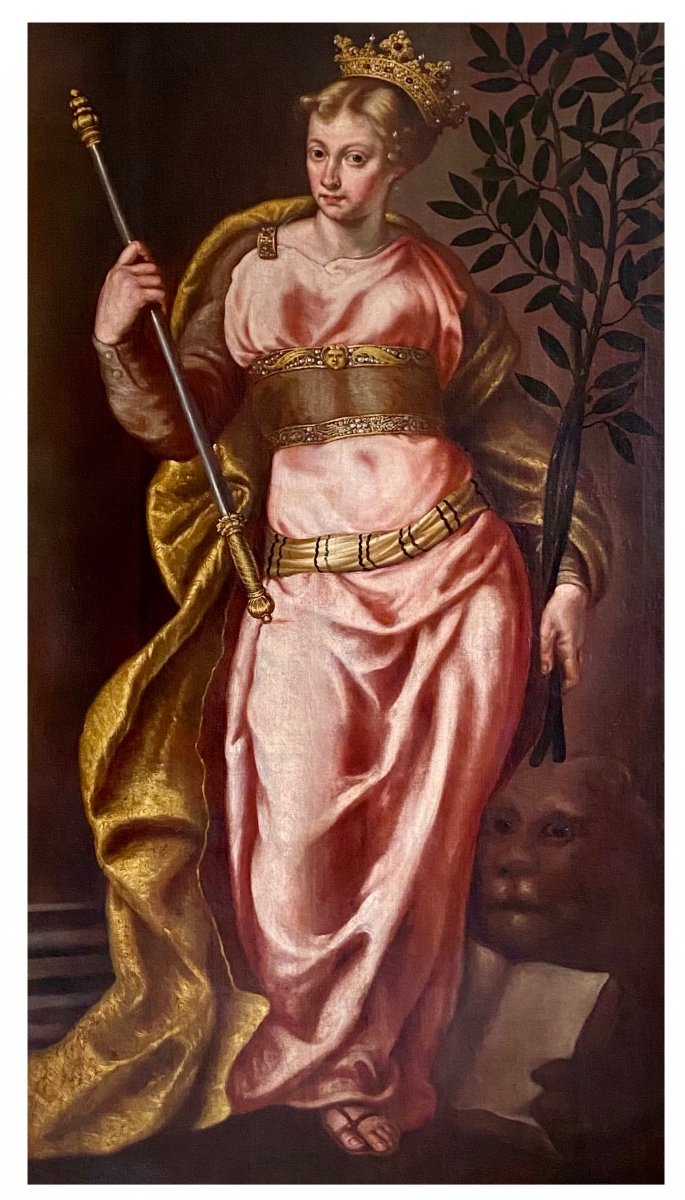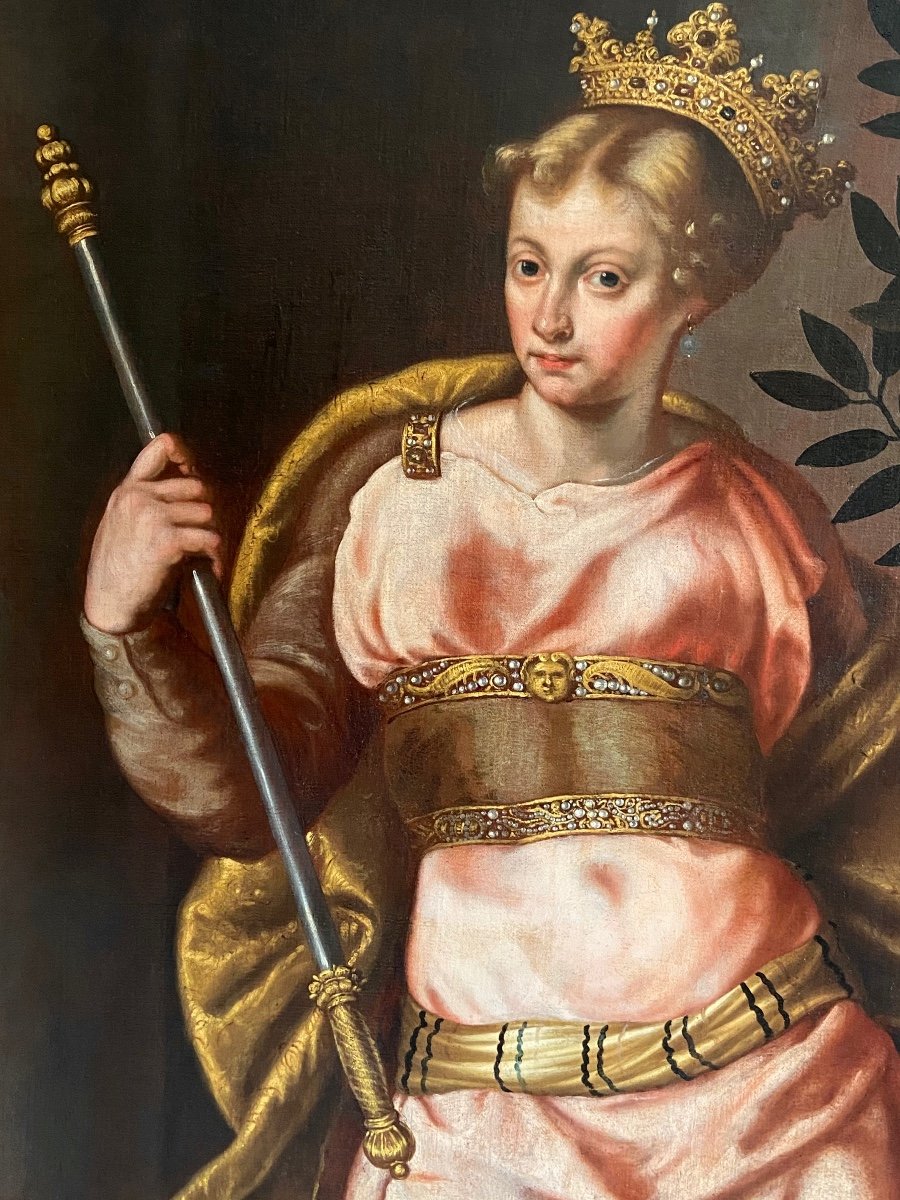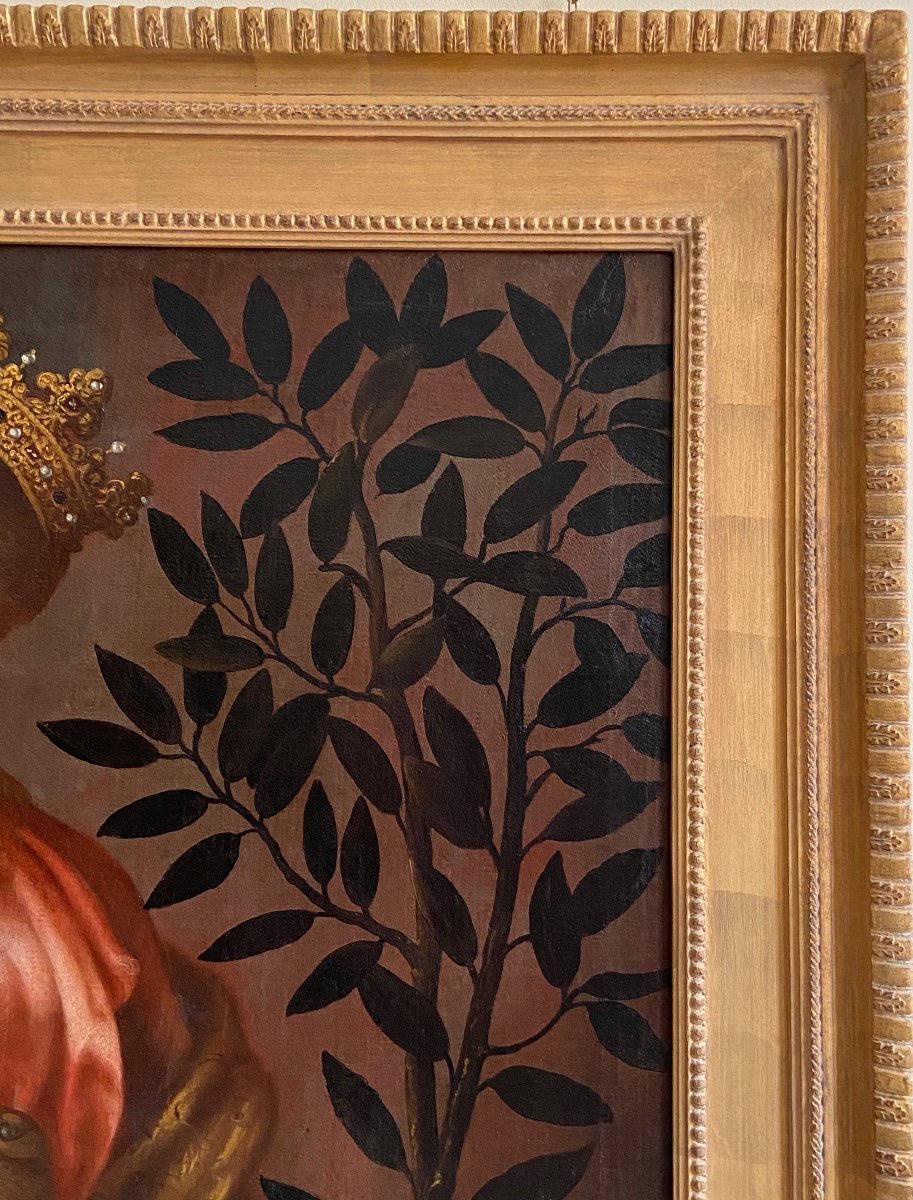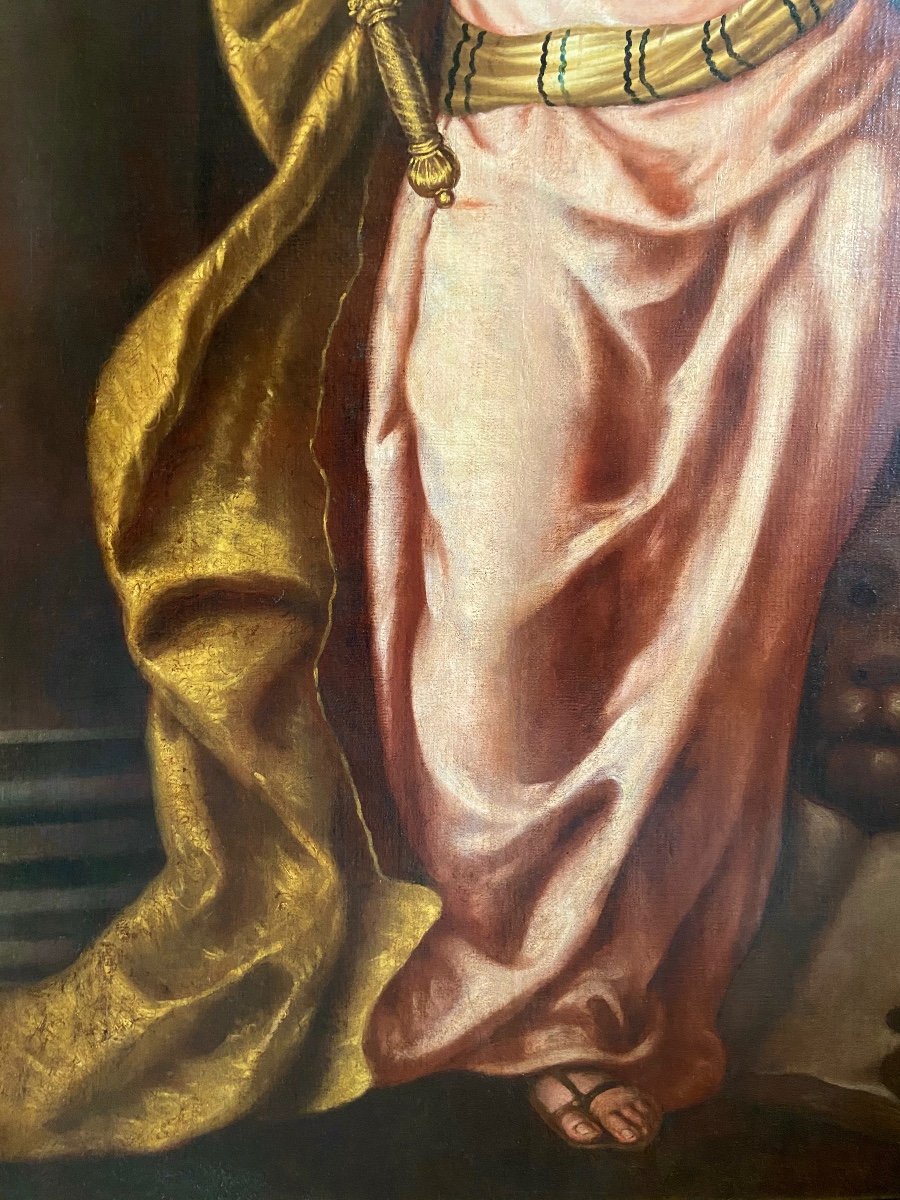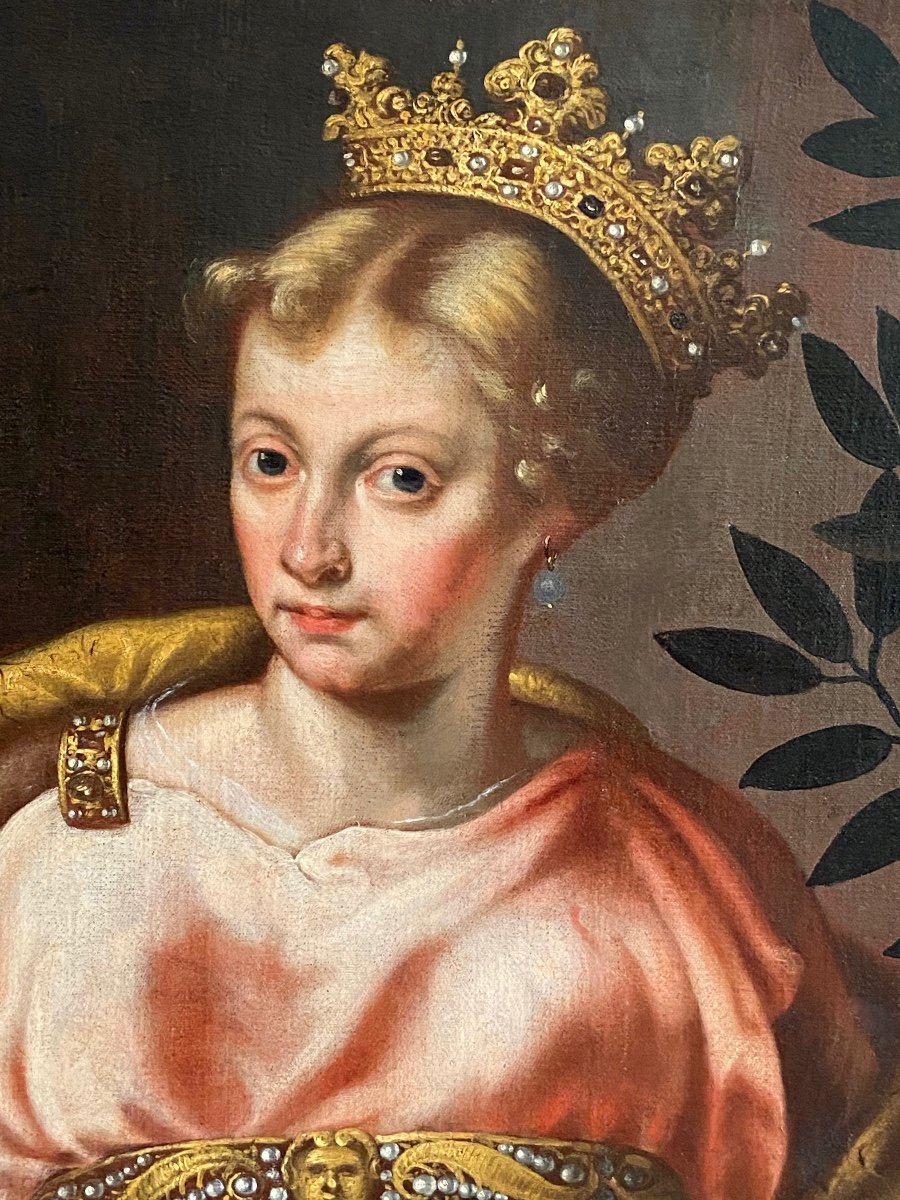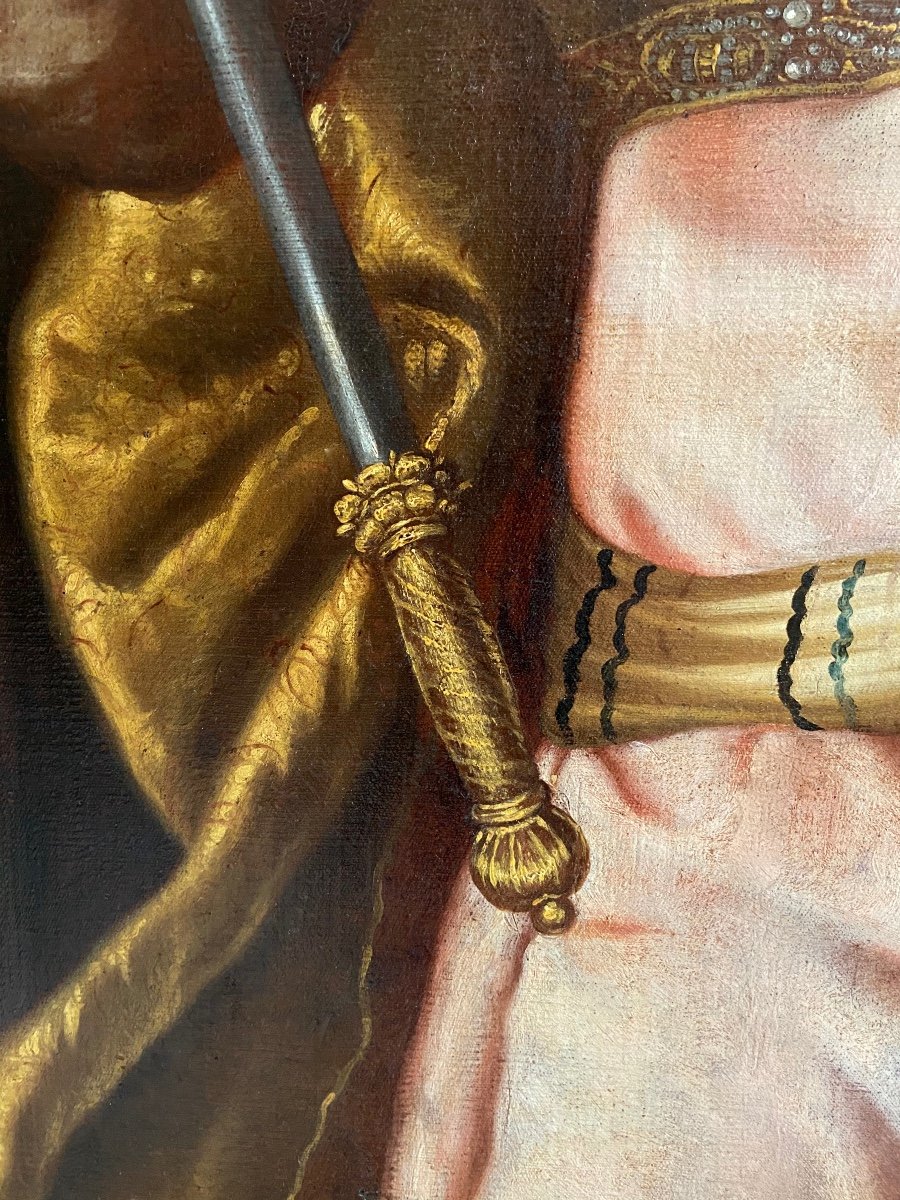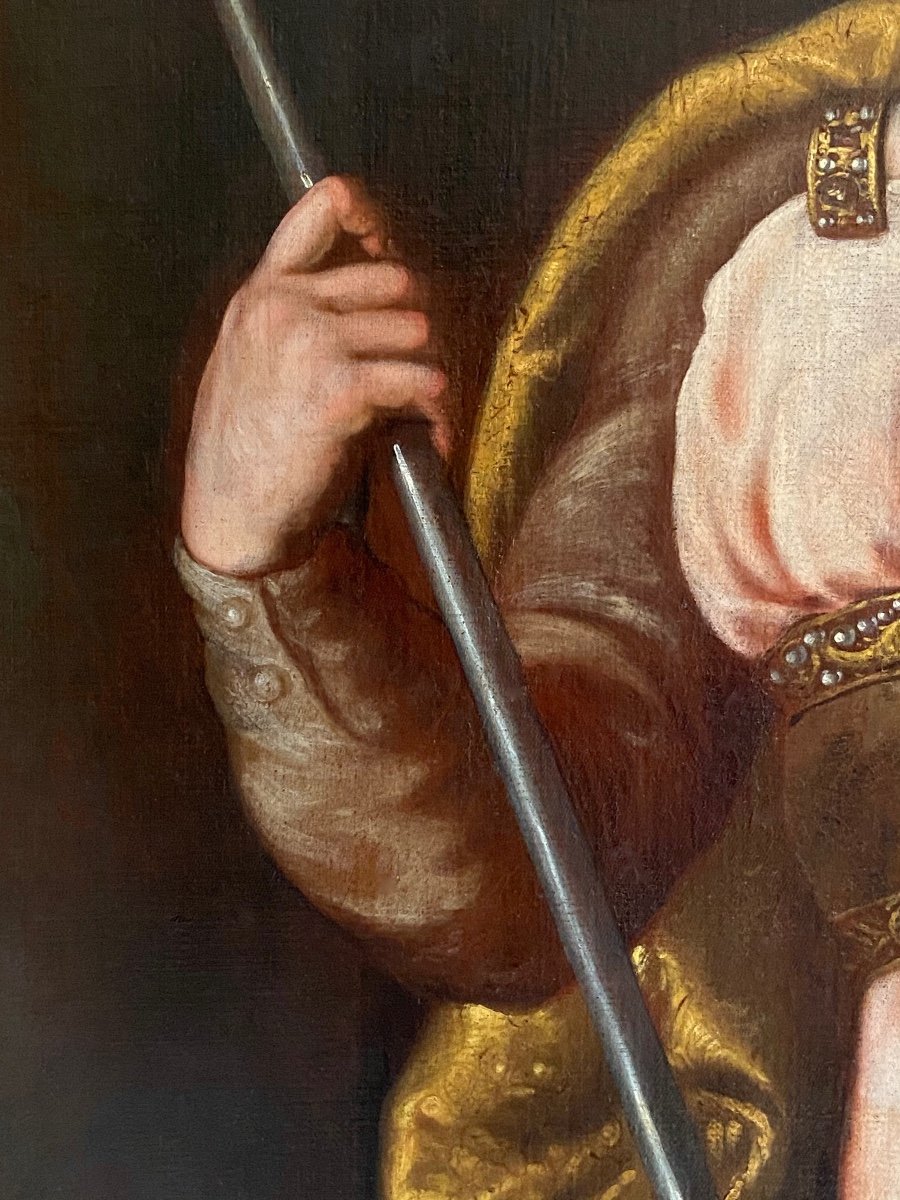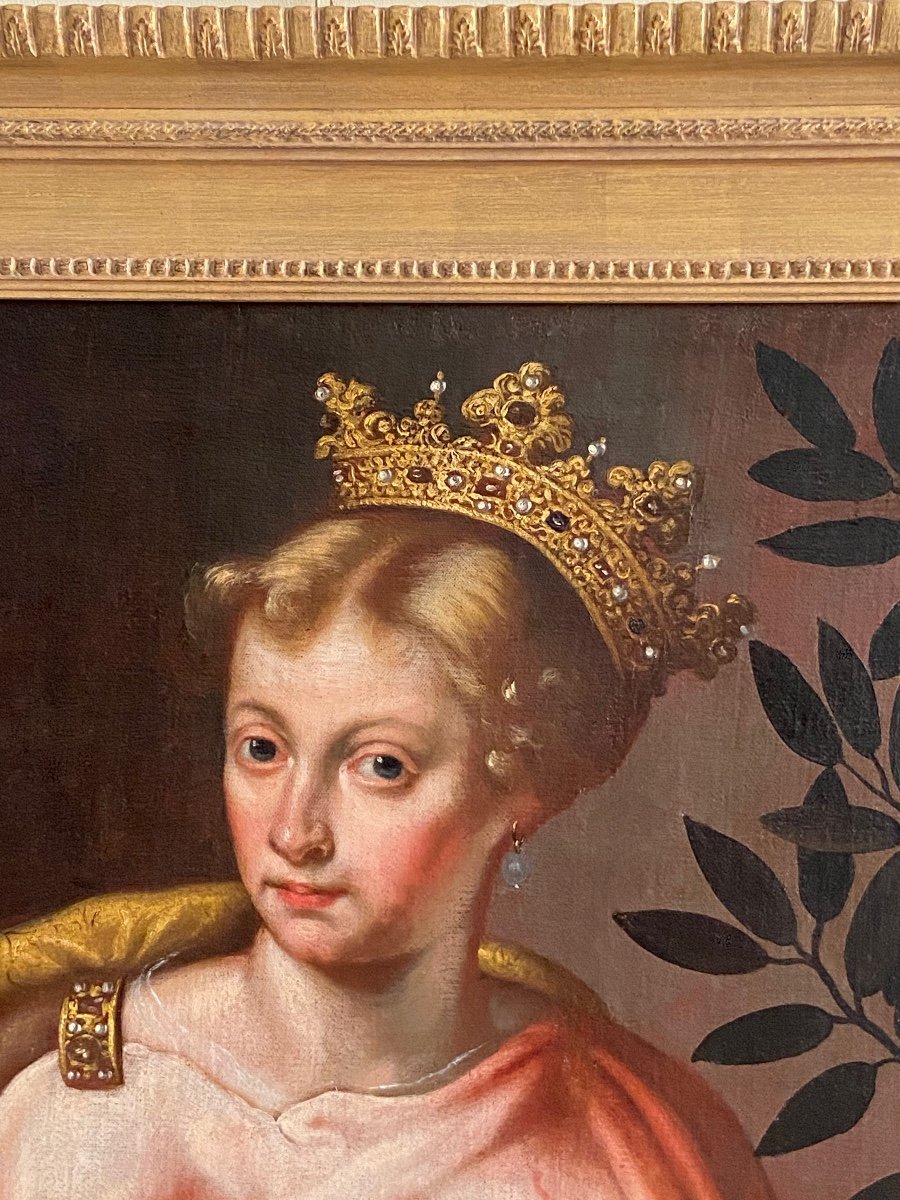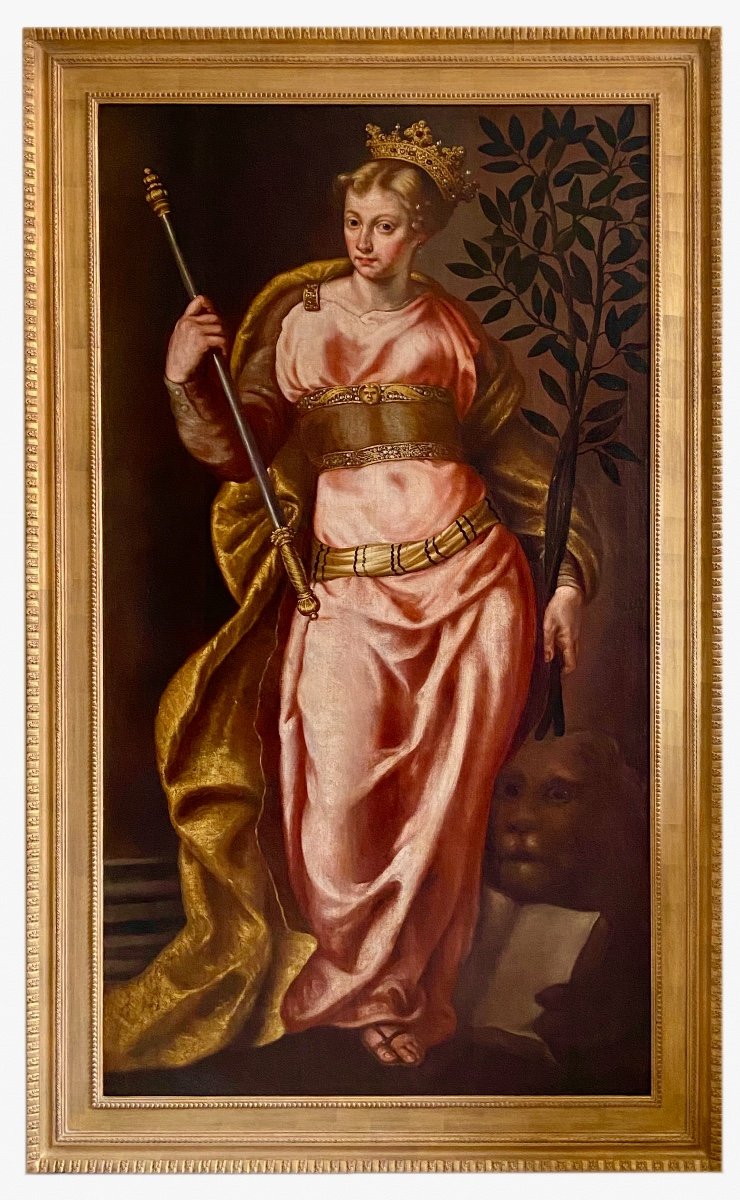""la Serenissima" A 17th Century Italian Personification Of Venice"
A fine and rare mid 17th century Italian Personification of Venice, with the sceptre of command, a laurel branch indicating glory and the lion of Saint Mark attributed to the Paduan artist Giulio Cirello (1633-1709)It is highly likely that this work was designed to decorate a public palace, perhaps of a mayor or judge on the mainland. The marching lion has an open book which indicates that building which commissioned this painting place had to pay taxes to the Serenissima. The column to the left of the figure symbolizes the solidity and strength of the Venetian state.
The compositionl of this painting recalls examples by Veronese, Tintoretto and Palma the younger, although historically this work dates towards the middle of the 17th century.
This work compares well with both Cirellos Glorification of the podestà Carlo Bellegno (from 1672) in the church of the Beata Vergine del Soccorso in Rovigo, called the Rotonda (see in Sgarbi, Rovigo. Le churches 1988, pp. 218-219), as well as the oval canvas with the Commemoration of the Paduan embassy for the election of Doge Nicolò Sagredo, in 1675, in the Civic Museum of Padua.
Giulio Cirello (1633-1709) The artists name appears in the Paduan fraglia of painters in 1671 and again on 28 January. 1674. According to the Brandolese, he was a pupil of Luca Ferrari da Reggio. His first known work is the Crowning with Thorns of St. Maria Maddalena de 'Pazzi in the church of Carmine in Padua, from 1671-72, judged by Arslan "one of his best works".
The allegorical painting of the Rotonda di Rovigo with Ilpodestà Carlo Bellegno adoring the Virgin is also dated to 1672, where the character, "assisted by the three Virtues, Justice, Fortress and Temperance", has on his right "a Female expressing the city of Rovigo to which the Abundance pours the due fruits of the countryside into her lap "(Bartoli).
In the same place there is a painting from 1678, similar in theme and style, depicting Ilpodestà GB Foscarini adoring the Virgin, with allegories of Faith, Science, Rovigo and Adige "pouring water from the urn" (ibid.).
There is also a dated work by Cirello in the church of S. Marziale in Venice. The canvas with the same subject from the church of S. Clemente in Padua can be dated to more or less the same period. Obe of his final works must be the Adoration of the shepherds in the Torresino church (S. Maria del Pianto), which GL Vernanzal extended to the sides after 1720 (Brandolese), where the dark tones are lightened by a certain lightening of the tints.
The artistic personality of C. belongs entirely to the Paduan tradition which ends with the end of the century to yield, in the eighteenth century, to the almost exclusive dominance of Venice. Cirello died in 1709.
We are grateful to Professor Enrico Maria Dal Pozzolo for his invaluable help in cataloguing this work.
For a detailed list of lost works mentioned by the sources (which for some provide a precise dating) and the attributions, see Fantelli, pp. 11-13, notes 1 and 27.
(Fonti e Bibl .: F. Bartoli, Le pitture ... di Rovigo, Venezia 1793, pp. 16, 107, 110; P. Brandolese, Le pitture ... di Padova, Padova 1795, ad Indicem; G. A. Moschini, Della pittura a Padova, Padova 1826, p. 104; N. Pietrucci, Biogrofie di artisti Padovani, Padova 1858, pp. 79 ff .; Invent. degli oggetti d'arte d'Italia, W. Arslan, Provincia di Padova, Roma 1936, ad Indicem; C. Donzellì-G. M. Pilo, Pittori del Seicento veneto, Firenze 1967, ad Indicem; N. Ivanoff, Pitture e sculture de La Rotonda, in La Rotonda di Rovigo, Vicenza 1967, pp. 98 s., 104, tavv. 48, 57; P. L. Fantelli, Per la pitt. padovana del Seicento: G. C., in Padova e la sua Provincia, XXVI (1980), 5, pp. 9-13 (con bibl. Esaur.); U. Thieme-F. Becker, Künstlerlexikon, VII, p. 11.)
Higher resolution images on request. Worldwide shipping available.
Canvas: 40” x 71” / 102cm x 180cm Framed: 50” x 81” / 127cm x 206cm



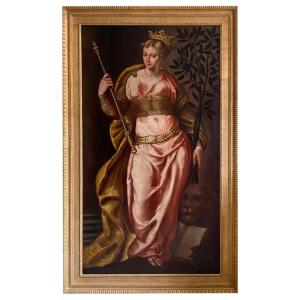
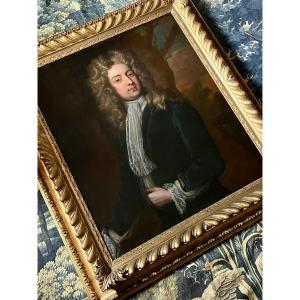

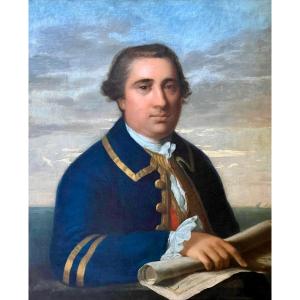
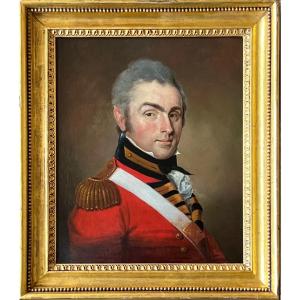
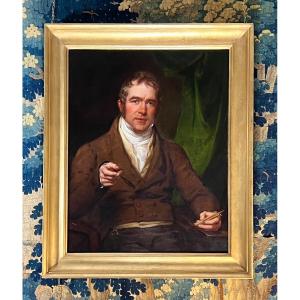

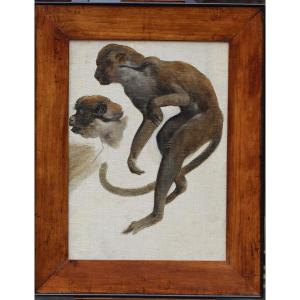
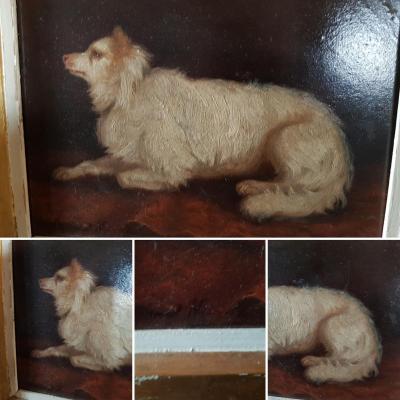

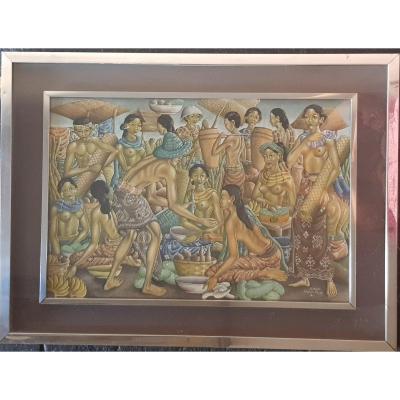

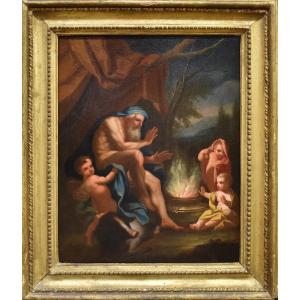




 Le Magazine
Le Magazine Rivista Artiquariato
Rivista Artiquariato TRÉSORS magazine
TRÉSORS magazine

